
|

|
|
Home Site Search Contact Us Subscribe
|
|
Welcome New Books Reveal the Heart of the Matter in Architectural Design Kenneth Frampton's new edition of Kengo Kuma's works, along with Kate Franklin and Caroline Till's global survey of novel thinking about sustainable materials, offer new slants on how materials matter. By Norman Weinstein August 16, 2018 Could anything be more central to the enterprise of architecture than the materials that comprise it? Yet architecture and design books rarely shed radically new light on the nature of materiality. Kenneth Frampton’s Kengo Kuma Complete Works, Second Edition (Thames & Hudson, $75), and Radical Matter: Rethinking Materials for a Sustainable Future by FranklinTill Studio’s Kate Franklin and Caroline Till (Thames & Hudson, $50) markedly inspire new awareness of how materiality can matter.
There’s a refreshing novelty in the organization of Kengo Kuma’s major architectural works. Instead of the conventional chronology of an architect’s projects, we’re presented with Kuma’s projects grouped by materials: Water and Glass; Wood, Grass, and Bamboo; and Stone, Ceramic, and Earth. This approach is overwhelmingly satisfying with Kuma. I can’t think of another contemporary architect who so painstakingly drives design through considering dynamic relationships between materials and environment.
It may seem odd to plunge into the materials of architecture by concentrating on the relationship among materials. After all, project costs consist of a tally of material things plus labor. But Kuma is a Japanese traditionalist in that the sense, the functionality and beauty of material things, is only apparent through their artful arrangement in space. Rooted in Chinese Taoist and Buddhist thought, this concept of materiality Kuma embodies is best expressed by the ancient philosopher Lao Tzu:
Tao Te Ching - Lao Tzu - Chapter 11
Kuma’s “Water/Glass” villa located in the Japanese city of Shizuoka astonishes at first glance because it creates the illusion of a house simultaneously, precariously yet firmly, modulating between solid and liquid. This image is sustained via a design where transparent walls stand between water level (which laps against the villa’s edges) and ceiling. Perhaps a floating version of Philip Johnson’s Glass House springs to mind? The link makes sense as you flip this hefty book’s pages and quickly spot photographs of Kuma’s “Glass/Wood” house, nearly a stone’s throw (1.2 miles) from Johnson’s Glass House in New Canaan, Connecticut. Glass and wood comprise the alpha and omega of Kuma’s material palette, the myriad ways they interact to give the most solid architecture a sense of natural processes continually in highly visible flux. Frampton, in his helpful scholarly introduction, classifies Kuma’s architecture as “Anti-Objective,” an abstruse, maybe unhelpful, label. This book, for me, may highlight “Relational Architecture.” Or “Taoist.” Kuma’s brief introduction seems like the last word. He associates his craft with that of the German architect Bruno Taut. In response to Taut spontaneously weeping in appreciation when seeing an old bamboo fence while visiting Katsura’s Detached Palace in Kyoto, Kuma writes:
What Taut had discovered in front of that fence at Katsura was a ‘relationship’ he had never seen before. The fence was made of bamboo, but the bamboo had not been cut and detached from the earth. Instead, the culms, still rooted in the soil, were bent and woven into a fence. ...it was architectural yet natural, natural yet artificial. Moreover, this miracle was achieved thanks to the amazing skill of craftsmen. ...a relationship here, one that had been established between a landscape, its natural resources and craftsmen who coexisted with nature.
Frampton’s book does justice to Kuma’s status as a major craftsman of our age with a visionary and fresh take on materiality.
Radical Matter is less a retrospective study of one form of architectural thinking about materials than a freewheeling catalogue of how global designers (among them architect Anders Lendager, who writes a cogent introductory essay) are rethinking what sustainable materials can be. Through nearly six dozen case studies that show cutting-edge uses of digital fabrication and industrial waste repurposing, you see products that expand imagination wildly. Ready for newspaper surplus reconverted back into wood? Or maritime pine tree resin serving as prime material for durable and surreally stylish table tops? Chairs composed of dust culled from a clothing shop floor mixed with a wood-glue binding agent? Whether any of these ideas will impact how future architects will think about materials, who can say? But the attraction of the book may rest in stimulating imaginative thinking about unlikely materials being subject to seemingly magical transformations molecularly, thanks to new technologies, culminating in new sustainable product forms. Instead of looking at dirt on my floor as a sorry reminder of chores awaiting me as I write, I can see it as an occasion of seeing it as material on the threshold of becoming something new of value, as a constructive building-block in relation to more conventional constructive materials. Perhaps the myriad wild products here had their genesis in looking at something that was supposedly valueless and commonplace, say an old sagging fence?
Norman Weinstein is the author of “Words That Build” – an exclusive 21-part ArchNewsNow.com series about writing as a keystone of a successful architectural practice. He's authored several books of poetry and books about music and literature. Weinstein is currently learning weaving in order to deepen his understanding of architecture, music, and poetry. He can be reached at nweinstein25@gmail.com.
More by Weinstein:
Weinstein: From Ada to Zaha and Everything In Between Op-eds, book reviews, musings, and debate.
An exclusive 21-part series that focuses on the overlooked foundations of architecture: oral and written communication.
Most recent:
Educating Future Architects to Think Like Curious Clients Expanding architectural education to include more about client consciousness is a key to enriching the profession.
Architectural Education at the Crossroads? Educators Duo Dickinson and Phil Bernstein look in opposite directions when assessing architecture school quality - but the next architecture school transformation may emerge from where no one is looking. |
(click on pictures to enlarge) 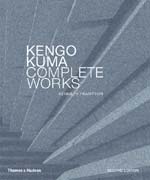 Thames & Hudson "Kengo Kuma Complete Works, Second Edition" by Kenneth Frampton 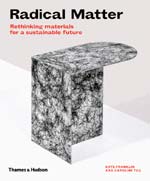 Thames & Hudson "Radical Matter: Rethinking Materials for a Sustainable Future" by Kate Franklin and Caroline Till 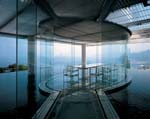 Mitsumasa Fujitsuka Kengo Kuma & Associates: Water/Glass - Guest House, Atami, Shizuoka, Japan, 1995 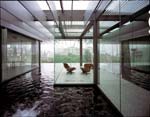 Mitsumasa Fujitsuka Kengo Kuma & Associates: Z58 Office, showroom, Shanghai, China, 2006 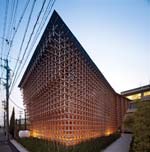 Daici Ano Kengo Kuma & Associates: GC Prostho Museum, Kasugai, Aichi, Japan, 2010 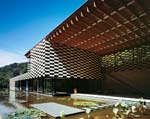 Daici Ano Kengo Kuma & Associates: Lotus House, Eastern Japan, 2005 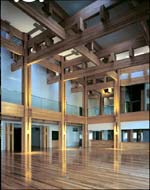 Mitsumasa Fujitsuka Kengo Kuma & Associates: Yusuhara Town Hall, Yusuhara, Takaoka, Kochi, Japan, 2006  Scott Frances Kengo Kuma & Associates: Glass/Wood - Private Residence, New Canaan, Connecticut, 2010 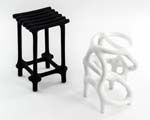 Marco Rosasco Radical Matter: Studio Ilio combine waste nylon from Selective Laser Sintering with sand to create a material that reacts to heat to become strong and durable. 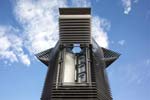 Derrick Wang Radical Matter: The Smog Free Tower, by Daan Roosegaarde, runs on clean wind energy and minimal electricity, and is capable of cleaning 30,000m³ of polluted city air per hour.  Courtesy of Jalila Essaïdi and BioArt Laboratories Radical Matter: Mestic considers manure as a valuable resource, and has developed a way to turn the abundance of cow excrement into bioplastics, biotextiles, and biopaper. |
© 2018 ArchNewsNow.com